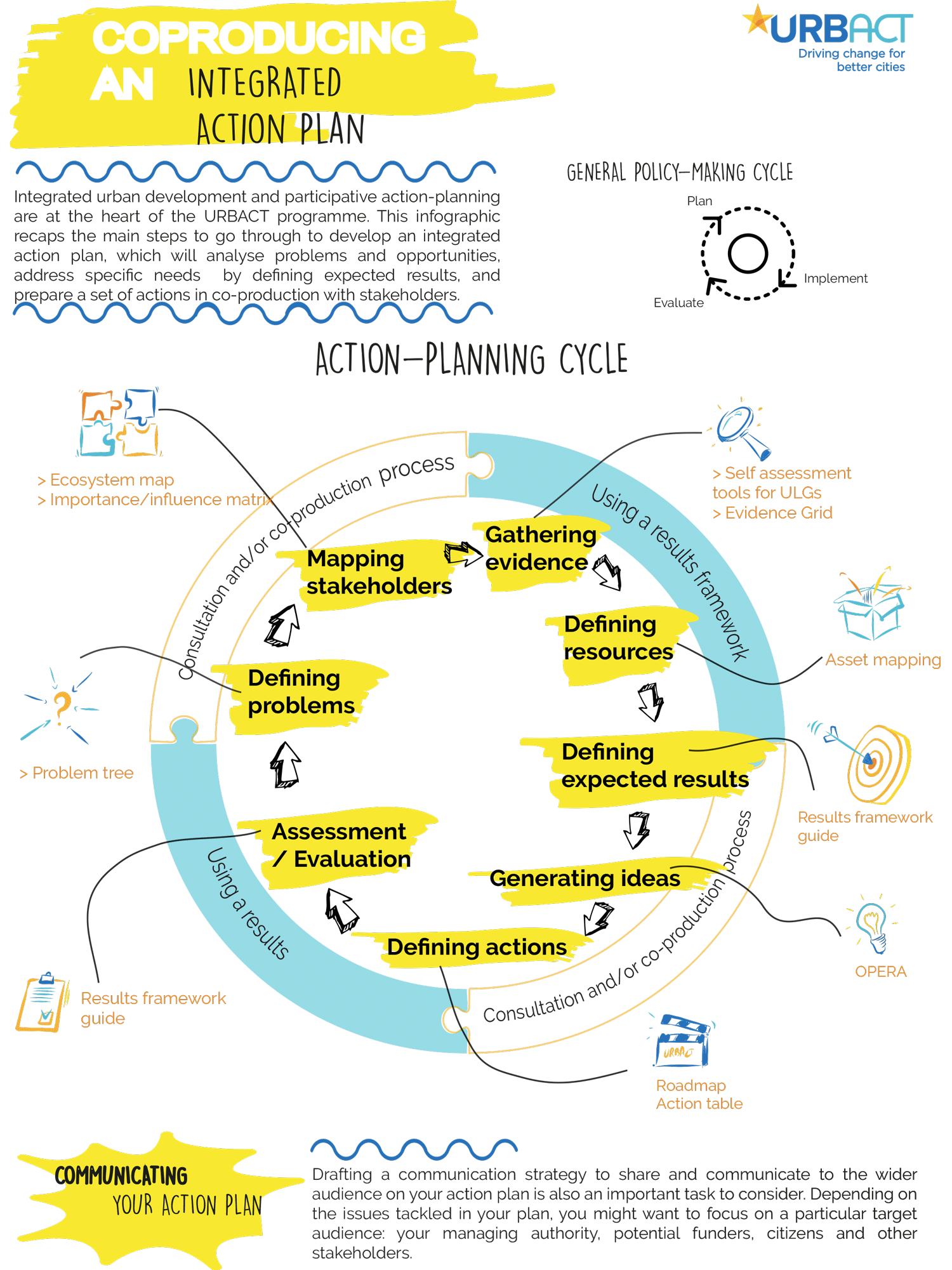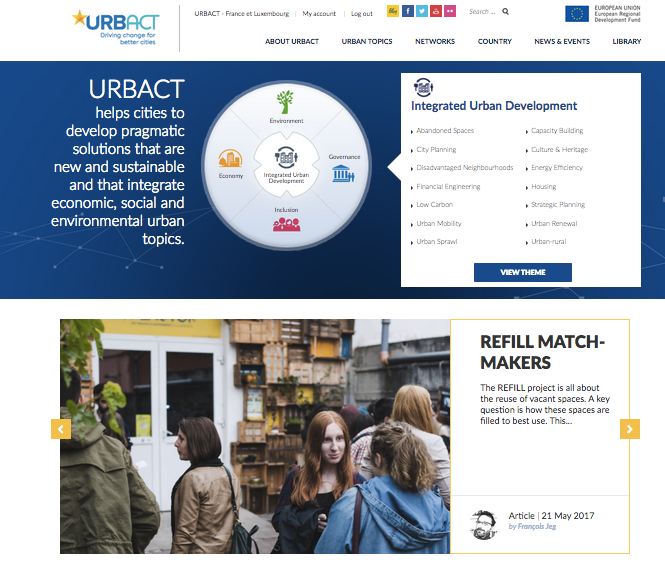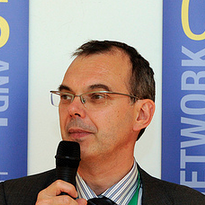URBACT, another paradigm for European cities
Edited on
24 June 2019With the integrated urban development approach promoted by the URBACT European programme, new models for improving our cities together are currently under construction. This is the narrative of a story that is already over fifteen years old.
(Translation of an article published in French in the magazine Urbanisme, issue n° 404, Spring 2017)
By Emmanuel Moulin, Head of the URBACT secretariat, and Eddy Adams, URBACT Programme expert

The official publications of the European Union (EU) on the city in Europe (Cities of tomorrow, 2011, 6th cohesion report, 2014; The state of the European Cities, 2016) present a rather pessimistic panorama, nine years after the crisis of 2008. The key aspects of this are well known: increase in disparity and poverty /1, massive unemployment in the South of Europe especially among the young /2, the concentration of development in the metropolises with small and medium-sized cities often in difficulties /3, the financial challenges of cities and falling public investment, inappropriate administrative boundaries and problems of regional governance, growing environmental and quality of life issues /4...
Recently, new issues have taken centre stage, including the influx of migrants and the digital transformation of society. Faced with these issues, cities all over Europe are reinventing their mode of operation; faced with the weakness of representative democracy, especially among the young, in low-income districts, in many cities in the East of Europe, they are seeking to build and implement their policies in a different way /5.
Rebuilding a trusted relationship between local stakeholders and citizens is essential and requires the elected representatives and administrators of cities to reinvent their role. They are having to gradually move away from a command and control role to the role of facilitator, making co-building of policies possible. This is a new contract the municipal authorities are having to sign with inhabitants and local stakeholders. And it is precisely at this juncture that URBACT, supporting integrated urban development, comes in.
Integrated urban development
The European regional cooperation programme URBACT /6, co-funded by the European Union's 28 States, Switzerland, Norway and the European Commission, is working for the cities to strengthen their capacities and design and implement integrated policies. With the networks of cities it funds, it has been promoting an integrated, participative approach to urban development among elected representatives and local stakeholders for fifteen years. In this it holds a unique position among the urban initiatives launched by the European Union during the programming period 2014-2020 /7.
The integrated approach to urban development has been gradually developed since the beginning of the millennium, with important steps like the Leipzig Charter signed by the Union's Member States in 2007, which attempted to formalise it for the first time. It is based on the principle, on the one hand, that in order to respond to sustainable development issues, the social, economic and environmental aspect of a local policy must be considered as a whole, and, on the other hand, that policy integration can only be done locally /8.
In its methodology with the cities, URBACT draws on the notion of horizontal and vertical policy integration. The region is the place and the local stakeholders are the implementers of this integration. The vertical integration of policies within a city requires the various municipal services and local agencies to work together closely. Therefore, a project to build a site to host activities must be designed and implemented by incorporating planning (choice of site), social (training, employment measures) and economic (support to business) aspects. Vertical integration puts the focus on a co-production of policies and actions with the local stakeholders concerned (inhabitants, associations, public and private-sector partners). It also underlines the need to mobilise the competent higher level authorities and the State upstream to ensure they work together.
The URBACT programme often encounters cities that want to work differently but that don't have the know-how or the tools to make the necessary changes. It has therefore created an environment for city employees that favours learning through practice.
Thus the city of Amersfoort (Netherlands) has shared "Sustainable food for Cities" among the network /9 in which its shared governance model and its experience were involved in helping inhabitants design and shape urban regeneration initiatives. One of the city council's bywords is "enabling", to gain the trust of and finance groups managed by inhabitants, to improve their neighbourhood. Another important component is the emphasis put on encouraging municipal employees to leave their offices and act as leaders of resident groups. This concept called free-range civil servants by Lucas Bols, the mayor, has inspired many cities outside those involved in the URBACT programme.
The city of Genoa (Italy) is currently managing the "Interactive Cities" network /10 which explores the impact digital tools have on governance. The trust issue is again at the heart of this work, especially in this period in which it is so elusive. A central component of the network's activities is the use of digital tools to encourage residents to participate. There again, URBACT plays the role of an urban laboratory for experimentation.
It is therefore in its implementation that integrated urban development reveals its true nature. Taken seriously, it is revolutionising how things are done. It needs horizontal preparation and the application of decisions, which cannot be taken for granted, even in the most advanced cities. In this sense, it reveals a very strong democratic requirement; it is therefore hardly surprising that URBACT primarily mobilises stakeholders in innovation and social transformation in its networks.

Practical solutions within reach
Most of the time, changes in attitude and ways of doing things appear in organisations little by little. URBACT proposes networked learning with tailored measures in which discussion between "peers" from different cities sharing similar issues is central.
Learning by doing is one of the programme's fundamental principles. URBACT works based on its participants' practice, following the formula of the organisational theorist Karl E. Weick, which says "we are much more likely to act our way into a new way of thinking than we are to think our way into a new way of acting". /11
By adapting the classic project development cycle, the cities involved in the URBACT network are encouraged to design new solutions to their problems. This learning first takes place in the transnational networks that presently take various forms /12 and that are strongly supported by targeted expertise and methods.
The networked activity hinges on ad hoc capacity building activities aimed at local practitioners and stakeholders of the cities involved, centring on the design and implementation of integrated strategies and action plans. These activities are organised both at national level, taking the specific contexts (languages, urban policies) into account and in a transnational framework.
URBACT's summer universities are a central component of this training system. Each of them brought together hundreds of participants involved in the URBACT networks from all over Europe, who worked together to draw up an integrated action plan to meet the challenges of a fictitious city created for the occasion. The results were impressive and the summer universities have been a foundation stone for participants to build further experience on.
These various components that have been built over time constitute the "URBACT method" of working transnationally with the cities (see inset); in Quito, in October 2016 at Habitat III, the third United Nations conference on building and sustainable urban development. The European Commission presented the diffusion beyond Europe of the URBACT method for transnational learning as one of its three commitments to cities.
In Europe and beyond, local councils are looking for new approaches for working with citizens. Elected representatives and local councils are busy redefining their functions and the way they act. URBACT is looking to help local authorities in this transition through the sharing of good practice and capacity building activities, drawing on its long experience.
Thus a community of practice has gradually been built /13, now well established, which brings together several thousand practitioners from all Europe. It is a vehicle for the transformation of practices in Europe's cities, constituting a true exercise of local democracy.
A knowledge exchange platform
 The transmission of the knowledge acquired within the URBACT community of practice towards a much larger circle of urban stakeholders not involved in its networks (other cities, States, Regions, public and private stakeholders, research) is a particularly complex challenge. How can we transfer knowledge stemming from a practice without being put in a position to put it into practice? URBACT has nevertheless taken it on and will draw increasingly in the future on its website urbact.eu as a platform for exchange of knowledge on urban development, with articles, blogs and thematic publications that summarise acquisitions of emerging knowledge. Furthermore, national URBACT points /14 provide the chance to link up in the national language with the country's cities and stakeholders in the 24 countries of the European Union.
The transmission of the knowledge acquired within the URBACT community of practice towards a much larger circle of urban stakeholders not involved in its networks (other cities, States, Regions, public and private stakeholders, research) is a particularly complex challenge. How can we transfer knowledge stemming from a practice without being put in a position to put it into practice? URBACT has nevertheless taken it on and will draw increasingly in the future on its website urbact.eu as a platform for exchange of knowledge on urban development, with articles, blogs and thematic publications that summarise acquisitions of emerging knowledge. Furthermore, national URBACT points /14 provide the chance to link up in the national language with the country's cities and stakeholders in the 24 countries of the European Union.
Since 2015, URBACT has also developed a new concept for its European conferences, now called the "URBACT City Festival" /15. Unlike the summer universities, which are transnational activities strictly reserved for the beneficiary cities of the URBACT networks, funded to participate in them, the city festivals are open to all cities and all urban stakeholders in Europe, whether or not they are involved in URBACT.
These festivals are designed to be interactive places of discussion nourished both by the experience of the URBACT networks, by external contributions and by the practices of the host city. The next edition is scheduled for the 4th and 5th October 2017 in Tallinn (Estonia) and will be the chance to present the "good practices" of cities in Europe, selected from an open URBACT call. When the European Union /16, launched its Urban Agenda with the aim to secure better sharing of knowledge between cities, European Union Member States and the Commission, they already had, in URBACT, a key tool with which to both promote city practices and make their know-how available to all levels of governance.
For URBACT, the crux lies in finding out how the programme can also contribute to the wider transfer of knowledge and recommendations from its cities to an even wider audience of European Union Member States and other stakeholders. The twelve thematic partnerships of the Urban Agenda /17 for the European Union that bring together each of the States, cities and organisations or programmes, including URBACT, to draw up, over a three-year period, an action plan for funding, regulation and exchange of knowledge, are the beginnings of a response.
This is the chance for the programme, through its representatives in these partnerships, field experts, local council managers involved in the URBACT networks, to broadcast the message of the cities and the local stakeholders they work with daily. The programme's various capitalisation tools could furthermore be mobilised in a targeted fashion to encourage and support the wider adoption of practices in integrated sustainable urban development.
Thus URBACT is gradually taking shape as the European platform for exchange of knowledge between cities and the other urban stakeholders in Europe: the European union, Member States, Regions, research institutions, etc. The message is simple: for city stakeholders, there are specific solutions within reach. By knocking on the right doors and taking the time to share with our peers in Europe, together we can learn to do things differently.
The URBACT method
For fifteen years now, URBACT has been developing principles, methods and tools for learning by cities through transnational networks. Three types of network bring together five to twelve cities for two to three years. The integrated action plan design networks and the networks to implement these plans are currently in progress. A call for proposals for good practice transfer networks will be launched in September 2017 based on previously selected cities.
The main components of this method are as follows:
• the production and implementation by the cities of action plans integrated in the context of local groups that bring together all the stakeholders concerned (residents, associations, public and private partners, etc.);
• learning within the networks through transnational meetings, peer exchange, study visits;
• national and transnational training courses (summer universities);
• a network support expertise, 100% funded by the programme;
• the application of an assessment method with impact and result objectives, indicators and a progress monitoring mechanism;
• the capitalisation and dissemination of the knowledge and practices of the city networks through conferences, seminars and publications.
All the information is available on the website www.urbact.eu
1/ Cf. "Against divided cities", URBACT, 2013.
2/ Cf. "Better cities, job generation for a jobless generation", URBACT, 2013; "Urban youth, more jobs", URBACT, 2015.
3/ Cf. "Shrinking cities", URBACT, 2013.
4/ Cf. "Energy efficiency" and "New mobility mindset", URBACT, 2013; "Sustainable regeneration in urban areas", URBACT, 2015.
5/ Cf. "How cities can rebuild trust in politics through meaningful public engagement", on the URBACT website.
6/ The URBACT III has a budget of 96 million Euros for the period 2014-2020. It is managed for all Europe by a Secretariat of fifteen people located in France in Saint-Denis in the premises of its management authority, the General Commission for Territorial Equality (CGET).
7/ Urban Innovative Actions, Urban Development Network.
8/ Cf. the Barca report "Place based approach", available on the Internet.
9/ Network of the URBACT II programme (2007-2013) which was managed by the Brussels region, on sustainable food.
10/ One of the twenty networks funded by URBACT III, which brings together ten cities from nine countries. Started in October 2015, it will end in May 2018.
11/ "We are much more likely to act our way into a new way of thinking than to think our way into a new way of acting" (Karl E. Weick)
12/ Cf. inset below.
13/ The URBACT programme has organised three summer universities, in Krakow in 2011, in Dublin in 2013 and in Rotterdam in 2016.
14/ 500 European cities, 10,000 local stakeholders have participated in URBACT's activities since it was created. Over 250 European experts are identified in the URBACT experts pool. Many of them have put the URBACT method into practice.
15/ For France, the national URBACT point http://urbact.eu/france is held by the General Commission for Territorial Equality.
16/ The first URBACT city festival took place in Riga (Latvia) and brought together 470 participants from all over Europe and beyond from 6th to 8th May 2015.
17/ The European Agenda for the European Union was launched by the Member States of the Union and the European Commission in May 2016 by means of the Amsterdam Pact. Through cooperation between the Commission, the Member States and the cities, it aims for a better use of funding, improvement of the legal framework for cities' actions and their knowledge, in particular through discussion. URBACT is a key stakeholder, both through its coordination bodies and the twelve thematic partnerships that form this agenda.
 Submitted by Emmanuel Moulin on
Submitted by Emmanuel Moulin on
